Discovering Farm-To-Table Food in the heart of Northern Virginia
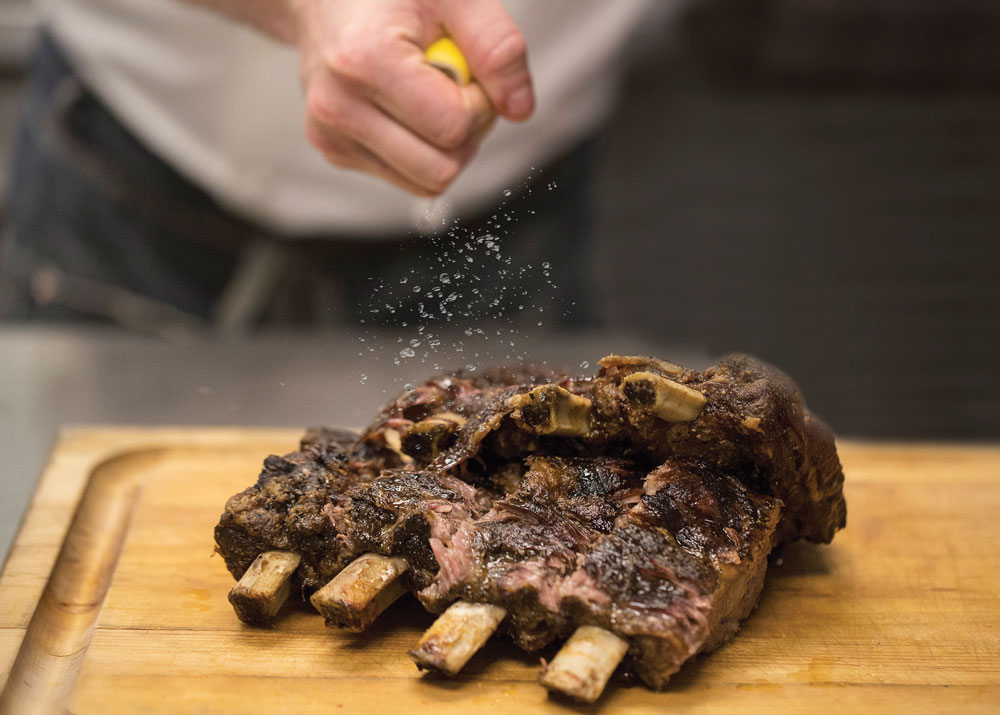
By Chelsea Rose Moore
“You can eat food by yourself. A meal, according to my understanding anyhow, is a communal event, bringing together family members, neighbors, even strangers. At its most ordinary, it involves hospitality, giving, receiving, and gratitude.” — Wendell Berry
Loudoun and Fauquier Counties are peppered with small farms, providing local chefs opportunities to embody the farm-to-table vision by serving food from Virginia soil. While each chef has unique goals and a distinct style, they share many characteristics: a deep passion for showcasing seasonal ingredients, a goal of keeping food approachable and a desire to prepare food with love.
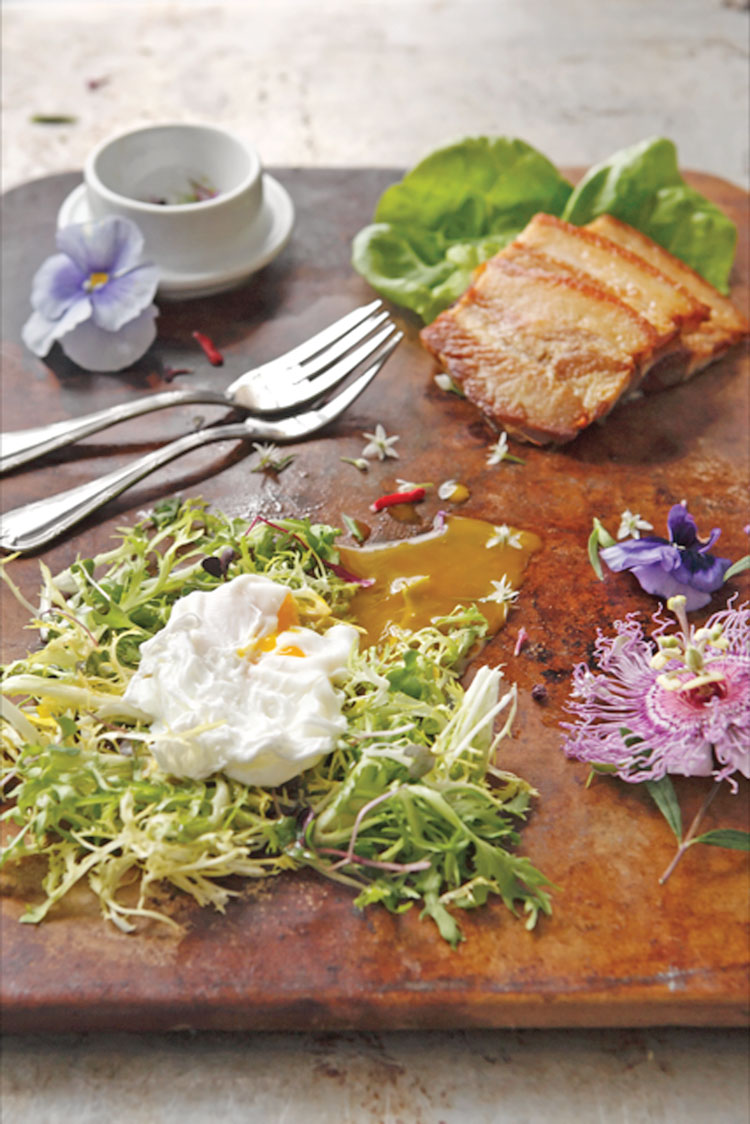
Anthony Nelson,
Field & Main Restaurant
Marshall, Virginia
Chef Anthony Nelson’s role as executive chef at Field & Main Restaurant is a culmination of his personal culinary journey and his desire to showcase the Piedmont Region through food.
A graduate of The Culinary Institute of America (CIA), Nelson has worked in Las Vegas, New Orleans and Nashville kitchens. But it was at CIA that he met fellow student Neal Wavra, Field & Main’s owner, where the two developed a friendship—and now a vision for farm-to-table food. Their goal is for Field & Main to be a place where the field meets Main Street, a harkening back to the days where farmers came to town to sell their goods at farmers markets.
“So many [restaurants] are farm-to-table, but they’re not [located] where the farms are,” Nelson said. “I really enjoy being able to showcase the bounty that is here, make it part of people’s everyday lives, and make them more aware of where their food comes from. It’s education. When people are aware, they start to eat healthier.”
As a child growing up on a ranch in rural Colorado, Nelson has been on “the other side” of farm life. His experience gave him a deeper understanding of the importance of cultivating relationships with local farmers and provided an interest in food. His mother would often call and ask him to get dinner started while she finished up on the ranch, giving him instructions over the phone. There in his mother’s kitchen he first fell in love with food, both as a craft and as an art.
Field & Main’s menu is constantly evolving based on what’s in season. They print new menus each day (“We’re not laminating any menus,” he said), creating a draw for local crowds to return and try new dishes. His desire is for his food to be tasty and accessible—and for guests to experience the unfamiliar in a familiar way.
He also oversees Riccordino’s, the take-out sandwich shop next door. The two places were designed with a symbiotic relationship in mind: Field & Main will use the pork chops, loins and belly, while the rest of the pig will be ground into sausage for Riccordino’s sandwiches. In this way the two restaurants utilize the whole animal, without producing waste. www.fieldandmainrestaurant.com
Ryan Arensdorf,
Salamander Resort & Spa
Middleburg, Virginia
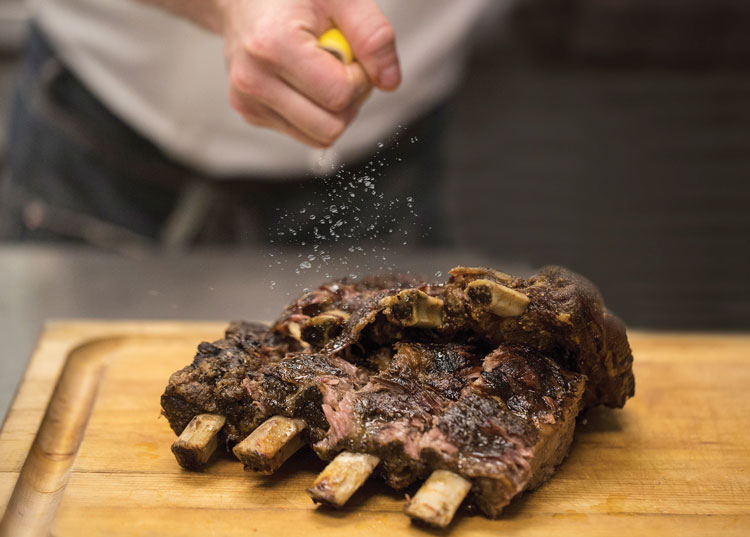
Colby, Kansas, isn’t a place most people know. Located in Northwestern Kansas, it is home to the “largest barn in Kansas” and The Prairie Museum of Art and History. But for Ryan Arensdorf, it’s home—and it’s the place he learned to cook.
He grew up in the kitchen with his grandmothers, who taught him to make pies, bread, roasts, coq au vin and fried chicken. He loved watching and learning from them, and he soon started making dishes of his own. As he grew older, friends would ask him to come to their houses and cook for them.
After graduating from the culinary program at Chicago’s Kendall College, he spent 12 years in the Windy City cooking at top steakhouses, a French fine-dining establishment and a modern Italian restaurant. His experiences in Chicago shaped him as chef, taught him to cook under pressure and formed his culinary “style.”
When the executive chef opportunity opened at Salamander Resort, he visited the property and immediately fell in love. “This [place] is every chef’s dream!” he said.
He thought of his childhood home in Kansas with the big backyard overlooking the water, and it reminded him of Salamander. It didn’t take long before he knew: He was home at Salamander Resort, too.
His menu is inspired by his roots and by Salamander itself: the peacefulness of the outdoors, the elegant horses, the honeybees and the culinary garden. The Fried Yohanan Farms Chicken (with a side of buttermilk biscuits and Salamander honey) that appears on the Harrimans Restaurant menu is a tribute to making fried chicken with his grandma.
Arensdorf wants his food to be “unpretentious” and “approachable,” much like he is himself. He’s careful not to overcomplicate things, believing that simple is best.
“Sometimes you just want to sit down and have good food,” he said. “We need a meat, a sauce, a veggie or a starch, and a garnish to dress it up. That’s it. We stop there; we are happy.” www.salamanderresort.com/dine
Jason Lage, Market Table Bistro
Lovettsville, Virginia
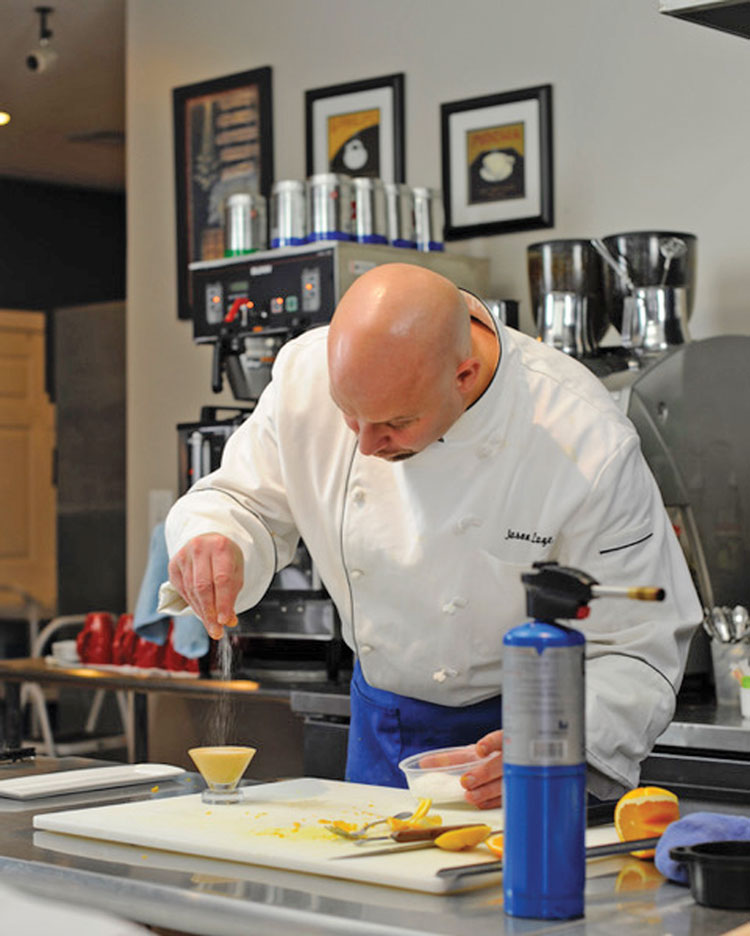
Jason Lage is a master at bringing people together. With three restaurants in Loudoun County—Market Table Bistro, Market Burger, Fries, and Shakes, and his latest Cocina on Market—he’s on a mission to change minds about food.
He is deeply passionate about sourcing ingredients from local farms, even including the names of local suppliers on his menus. When Market Table Bistro first opened, he worked with four farmers; now he works with 58 local purveyors.
“I get to see products from the seed and the sprout,” he said. “I get tomatoes that come off the vine and have never hit a refrigerator.
“The farm-to-table movement is nothing new,” he added. “It’s how I grew up eating. It’s how people have been eating for forever. Before World War II, this is how everybody ate.”
He believes there is a growing awareness about what goes into food, or perhaps more importantly, what does not go into food. His goal is to educate guests about the importance of what they’re putting in their mouths. “I can always teach people about history through food,” he said.
Lage attended culinary school in Falls Church, going on to work as executive chef at The Lansdowne Resort, The Jefferson Hotel DC, The Oval Room and at Michelin-star restaurants in France. Taught by his mother, his grandmother, and his travels around the world, he tells powerful stories through his food.
As the youngest of seven kids, he watched his older siblings move out of the house and get married. But he always looked forward to Sundays, when his siblings would come home. Together with their significant others, the family would sit around the big table and eat the meal their mother had prepared. Sundays taught him the magical way food could bring people together and make them feel loved. He began to see food as a source of comfort and happiness, feelings he masterfully replicates in his restaurants today. www.markettablebistro.com
Lawrence Kocurek, Hunter’s Head Tavern Upperville, Virginia
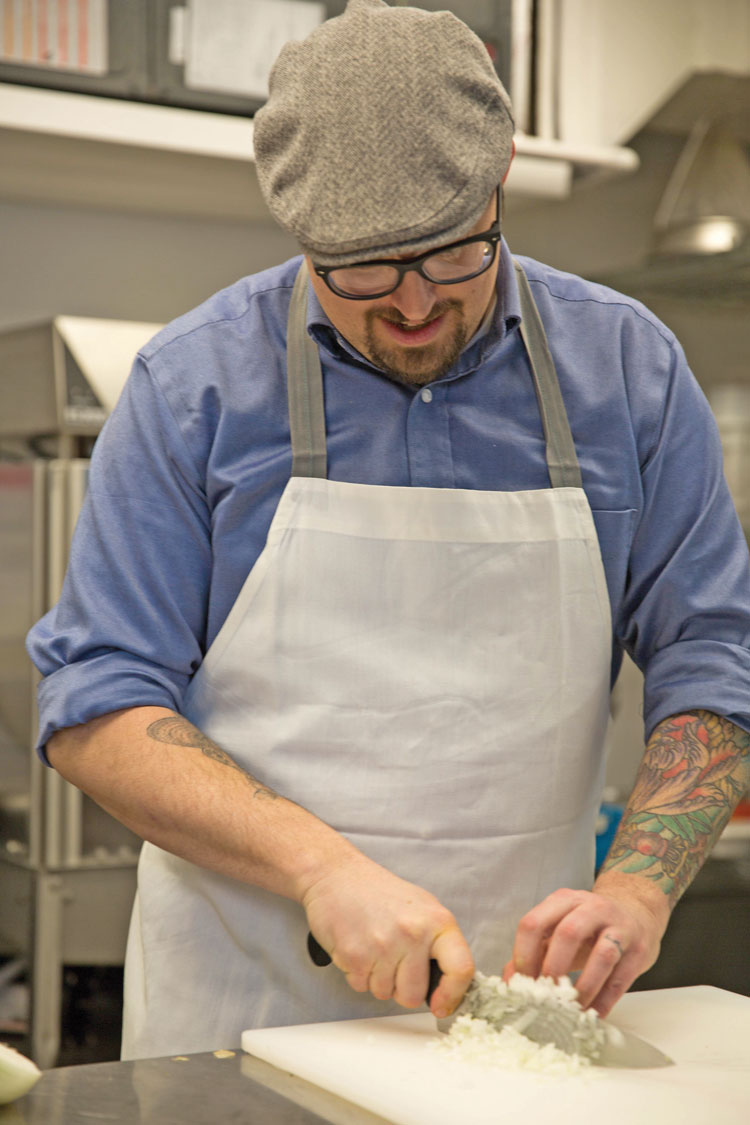
Lawrence Kocurek likes letting his ingredients speak for themselves. A native of Texas, he grew up hunting, fishing and spending time in his grandparent’s garden. He always found himself drawn to nature, a passion reflected in his affinity for farmland today.
A graduate of New York City’s French Culinary Institute (now the International Culinary Center), he worked in kitchens in New York and South Florida and was a partner in restaurants in Austin. He and his wife opened Kocurek Family Artisanal Charcuterie and sold their meats at farmers markets. Drawn to farming, he left the world of restaurants and moved his family to Kentucky to work on a duck and goose farm. But it wasn’t long before his roots called to him, and he relocated to Virginia to pursue his current role.
As executive chef of both Hunter’s Head Tavern and Gentle Harvest, he works to create continuity between the two businesses. Close to 45 percent of the menu at Hunter’s Head appears in Gentle Harvest’s prepared food cases for people to purchase and enjoy at home.
His prep kitchen is at Aryshire Farm in Upperville, the first farm in Virginia to be both certified humane and certified organic. He loves being surrounded by the gardens and orchards, and enjoys walking outside and talking with farm managers. Inspired by Virginia’s farming community, he changes the Hunter’s Head menu monthly.
“I’ve always had a love and appreciation for farmers and for farming,” he said. “To work for a restaurant group where you actually have the farm [here] has been great. If you don’t support local farmers, they will either sell or end up doing something else. People say [eating local] is expensive, and it can be, but the tradeoff is your health.” www.huntersheadtavern.com www.gentleharvest.com
Eric Smith, Goodstone Inn & Restaurant Middleburg, Virginia
Eric Smith never planned on pursuing a career in the culinary arts. If anything, the culinary life chose him.
He wasn’t sure what to do with his life, but he started busing tables to make money. Almost immediately, he found himself pulled toward the kitchen. He liked the lifestyle of chefs and found joy in creating art. He moved to washing dishes and worked his way from the dish pit, to lead cook, to sous chef. While attending culinary school in Falls Church, he simultaneously worked as a sous chef.
At just 33 years old, he already has a full resume. He worked as executive chef at Hunter’s Head Inn & Tavern, and as sous chef at Poplar Springs Inn & Spa, where he honed in on butchery skills and made-from-scratch cooking. He was a banquet chef at Salamander Resort and spent time at Goodstone Inn before accepting the position as executive chef.
Food is the way he expresses himself and makes art. “One of the beautiful things about food is that it creates memories,” he said. “When diners come in, they’ll remember the experience, and they’ll remember where they were in life at the time [they dined with us]. Cooking is community-driven.”
He seeks to create a culture where cooks can learn, express themselves through their food, and shine in their roles. His right-hand man is his sous chef Thomas Layman, whose talent has shaped the kitchen in many ways.
Goodstone’s menu changes every few days, based on what’s in season. Smith is dedicated to supporting local agriculture, and he likes keeping his dishes simple.
“I want food to be food,” he said. “People overcomplicate things. I like fresh food. I like simple food that is put together in an interesting way. I like letting the food be itself and looking at it from a different perspective.” ML www.goodstone.com


